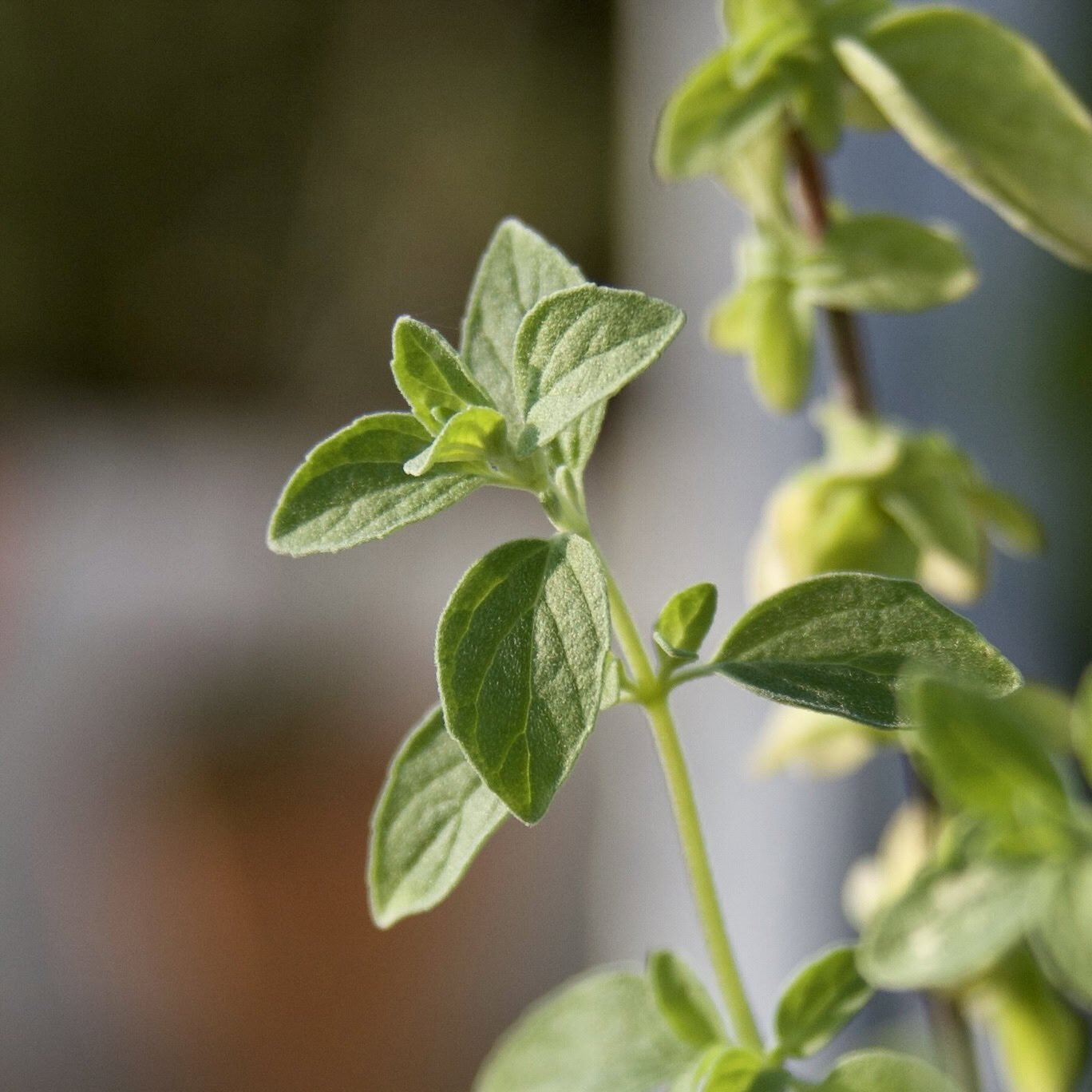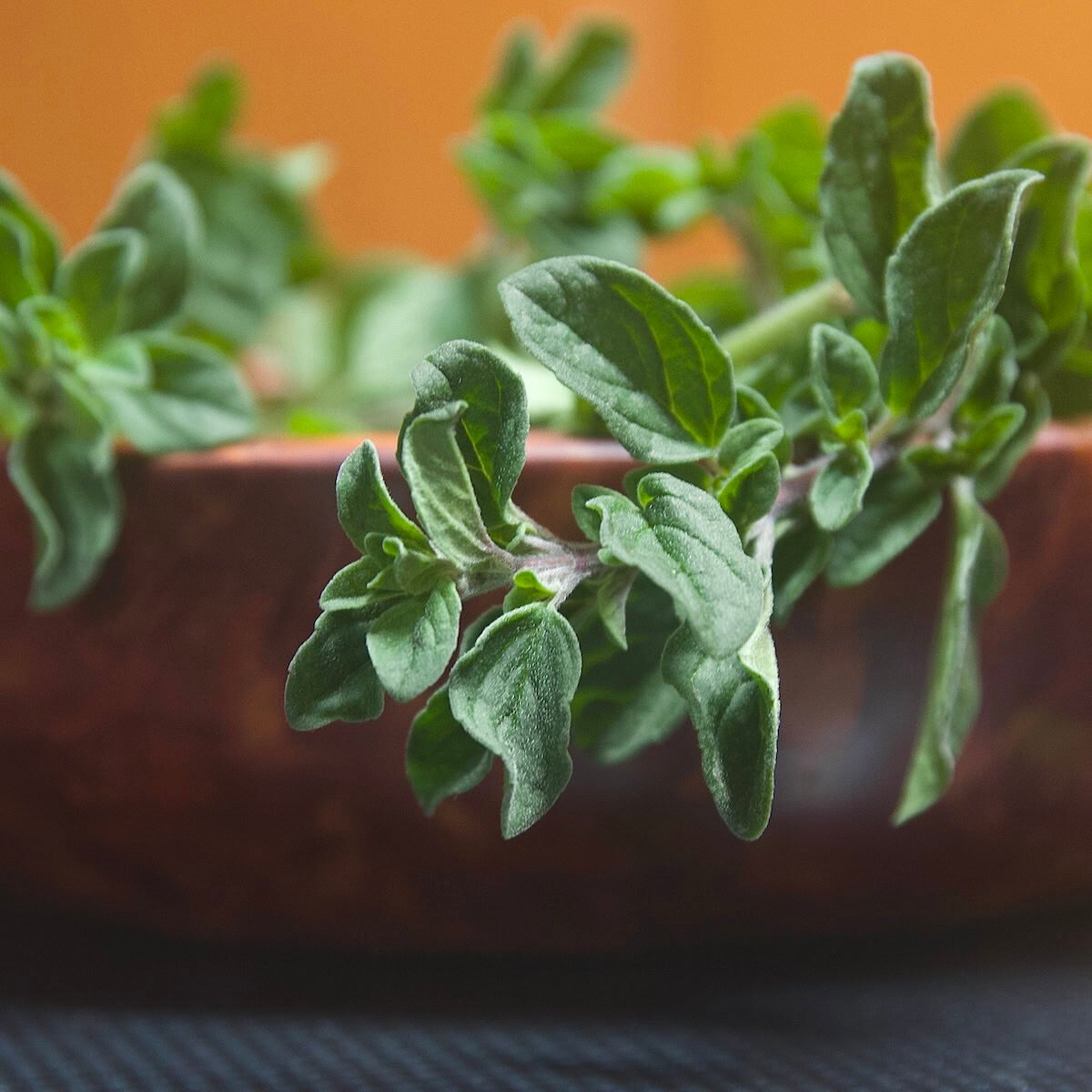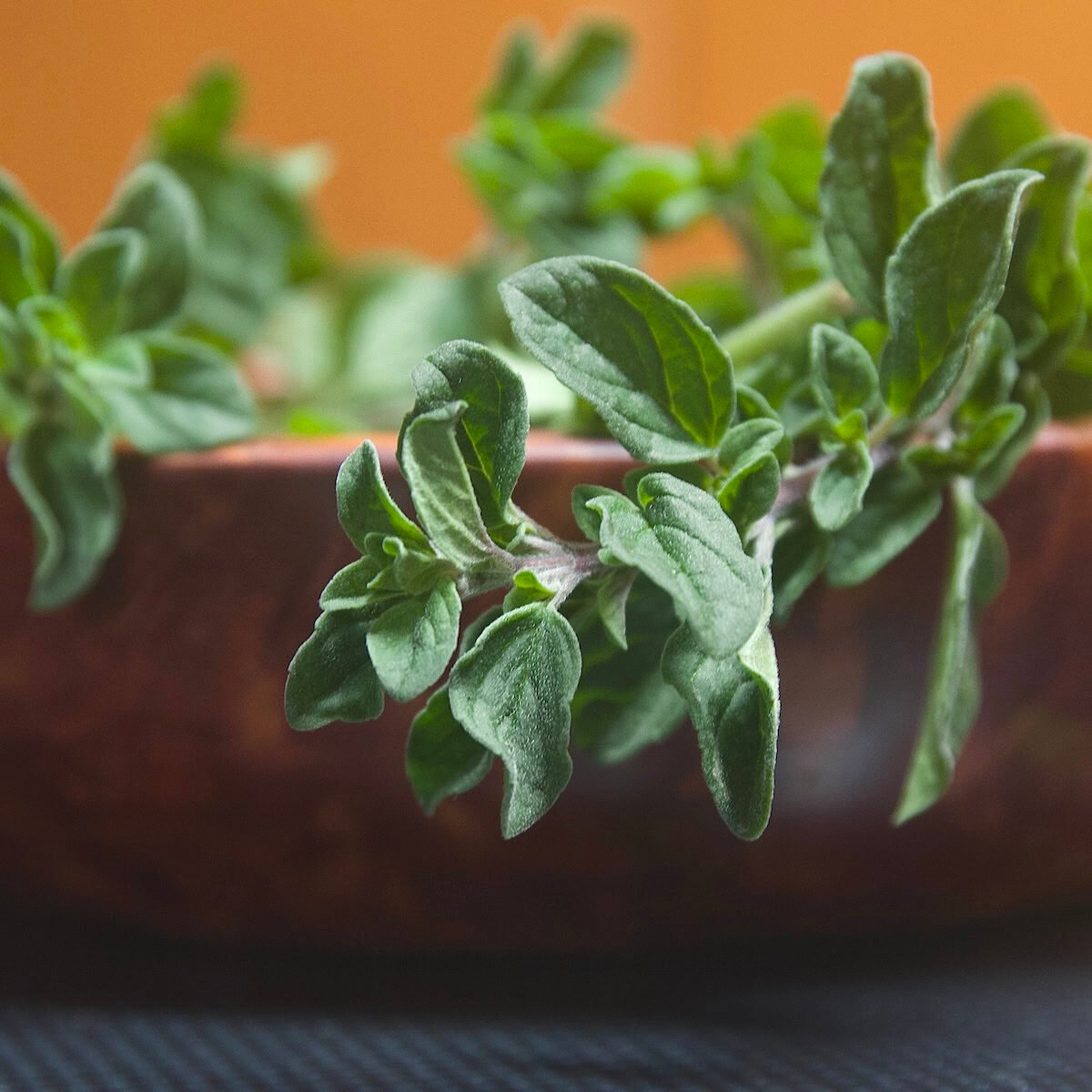Oregano
Oregano is the herb derived from the leaves, stems, and flowers of various species in the genus Origanum, part of the mint family. There are over 40 species, but only a few are widely used in cooking. Each of the following species has numerous cultivars, totaling over 100 culinary varieties of oregano:
True Oregano: Origanum vulgare
Italian Oregano: Origanum × majoricum
Syrian Oregano (Za'atar): Origanum syriacum
Turkish Oregano (Pot Marjoram): Origanum onites

REGION OF ORIGIN
The Mediterranean. Oregano hails from the coastal hillsides of Italy, Greece, and Turkey. The warm, dry climate and rocky soils of this region helped oregano develop its acclaimed aromatics. It is now cultivated worldwide, but its heart will always be in the Mediterranean.
PART & COLOR
Oregano leaves are small and oval-shaped with a slightly fuzzy texture. From fresh to dried, they change from bright green to a more muted, olive green. Tiny edible flowers occasionally pop up at the tips of the herb's stems, ranging from white to pale pink.
HARVEST
A robust, sun-loving perennial, oregano thrives in temperate zones around the world. It is planted in the spring and the leaves are best harvested in mid-summer when the plant is fully established, but before it starts to flower. Leaves can be used fresh or dried. To dry them, cut and bundle the stems, then hang them upside down in an airy, shaded place. Once dried, strip the leaves off the stems and gently crumble them.

FLAVOR & AROMA PROFILE
Oregano weaves warm, earthy notes with hints of mint, lemon, and camphor. Its fragrance is robust, exuding the rustic heart of the Mediterranean. Oregano’s flavor is bold and savory, herbal and subtly bitter with a little kick. It has a light sweetness like thyme that softens it. It also leaves a pleasant coolness on the tongue. The entirety of the profile works well in both simple and complex dishes.
When dried, the herb’s core flavors intensify. It becomes more earthy, more pungent, and more bitter. Some of its minty and citrusy top notes get lost, but dried oregano’s more concentrated profile has its utility. You only need to use about a third of the amount, it lasts much longer, and it can be quickly applied and even distributed.
CULINARY USES
Essential to Mediterranean and Latin American gastronomy, oregano can lend character to everyday dishes just as well as it serves traditional recipes. In Italy, it's a key ingredient in pizza, pasta, and herb blends. Its potency stands up to the strong tastes of garlic, onion, and acidic tomatoes. Greek cuisine leans on oregano to season lamb and add depth to salads, soups, and gyros. Its robust, minty earthiness amplifies the flavors of seafood, grilled meats, and roasted vegetables.
In Mexican cooking, oregano complements chiles and citrus, pairing perfectly with spice rubs, salsas, and moles. This herb has a lot to offer. Fresh leaves make a tasty garnish and dried oregano can be sprinkled on at the end of cooking for a fragrant finishing touch.



